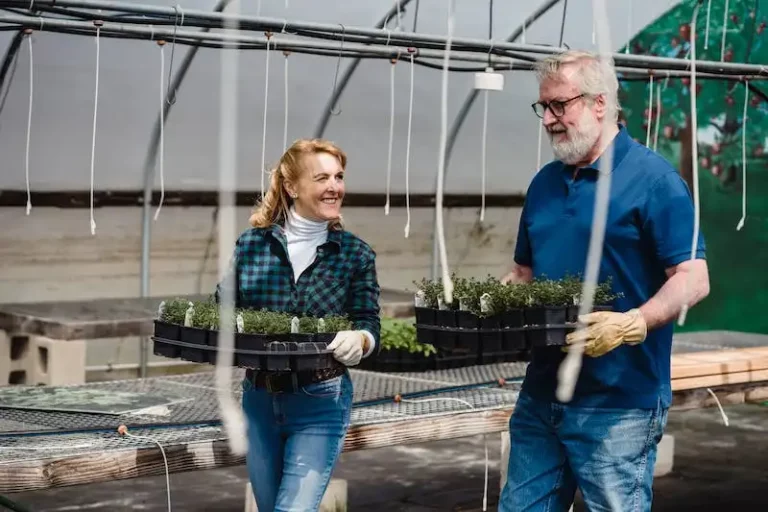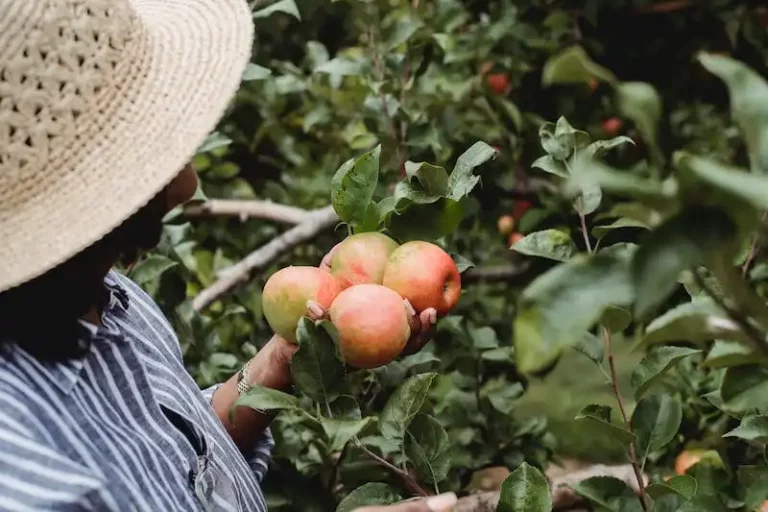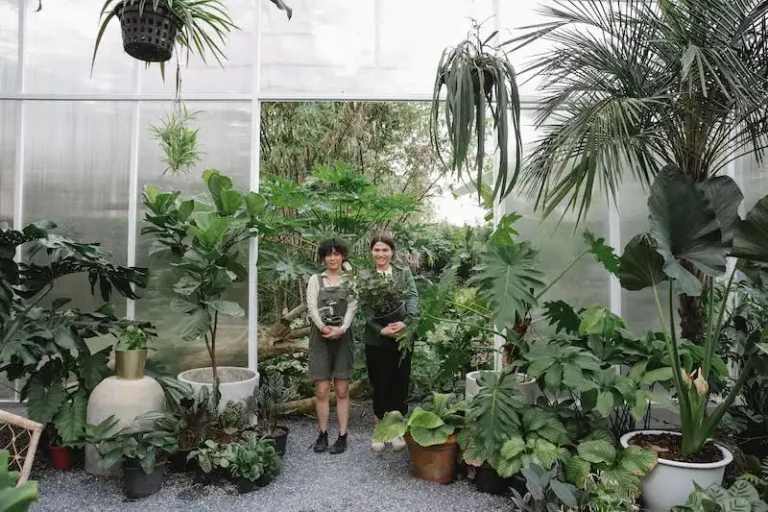Every year, on the spooky night of Halloween, families around the world put out jack-o’-lanterns to scare away mischievous spirits. But why settle for the traditional orange pumpkin when you can go a step further and use a purple one?
The origins of this unusual tradition can be traced back to ancient Ireland and the Celtic festival of Samhain. During this time, people would carve faces into turnips and place them outside their homes to ward off evil spirits. However, as the years went by, this tradition evolved and the turnips were replaced by pumpkins, which proved to be the perfect canvas for carving spooky faces.
So why the color purple? Well, it turns out that purple has long been associated with spiritual significance and has defied the typical Halloween color scheme. Purple represents the spiritual world and is often used to symbolize the connection between the physical and spiritual realms. By using purple pumpkins, families are embracing the spiritual aspect of Halloween and paying tribute to those who have passed away.
But the use of purple pumpkins goes beyond just spiritual symbolism. It also serves as a way to raise awareness for a cause. In recent years, the Teal Pumpkin Project has gained traction, encouraging families to put out teal-colored pumpkins to indicate that they offer non-food treats for children with food allergies. The purple pumpkin serves a similar purpose, reminding people to be mindful of those with health conditions and offering alternatives to traditional candy.
While some may argue that this trend has stuck around simply because purple has become a trendy color, it is important to note the generous spirit behind it. Just as the tradition of carving jack-o’-lanterns has always been about offering a beacon of light in the darkness, the purple pumpkin serves as a symbol of inclusivity and understanding, reminding us to be kind and considerate to those who are different from us.
So next time you see a purple pumpkin sitting on a doorstep, please don’t dismiss it as just another Halloween decoration. Take a moment to appreciate the thought and meaning behind it, and remember that Halloween is not just about costumes, candy, and scare tactics. It is a time for us to come together as a community, honor our traditions, and celebrate the spirit of giving.
Halloween Pumpkins
Halloween pumpkins, also known as Jack-o-lanterns, have become a popular symbol of the holiday. They are often seen displayed on porches and in windows, and children eagerly go from house to house, gathering candy and treats that are offered to them. But where did this tradition originate?
The history of Halloween can be traced back to the ancient Celtic festival of Samhain, which marked the end of the harvest season and the beginning of winter. It was believed that on the night of October 31st, the boundary between the living and the dead was blurred, and spirits would come back to earth. To protect themselves from these spirits, the Celts would light bonfires and wear costumes.
According to legend, there was a man named Jack who was known for his stingy and miserable nature. One night, he came across the devil, who wanted to take his soul. Jack managed to outsmart the devil by making him promise not to take his soul, and in return, the devil gave Jack a burning coal to light his way. Jack placed the coal inside a carved turnip and began to wander the earth, unable to find peace.
When the tradition of Halloween made its way to Ireland, the locals began carving jack-o-lanterns out of turnips or potatoes, placing a glowing coal inside to represent Jack’s spirit. However, when Irish immigrants came to America, they discovered that pumpkins were more abundant and easier to carve. Thus, the tradition of using pumpkins for jack-o-lanterns began. Unbeknownst to many, the orange pumpkin became the perfect symbol of Halloween.
Over the years, Halloween has evolved into a holiday for families to come together and celebrate. It is a night of fun and scares, where children dress up in costumes and go trick-or-treating. But Halloween is also a night for spiritual awareness, with some people believing that the boundaries between the living and the dead are once again blurred. Many families use Halloween as an opportunity to remember loved ones who have passed away, honoring them with displays of purple pumpkins, which symbolize both remembrance and awareness of epilepsy.
So, next Halloween, when you see those purple pumpkins around, please remember that they have a deeper meaning. They are not just decorations; they are a tribute to the ancient roots and legends of Halloween, and a way to show support for those dealing with epilepsy. And again, don’t forget to indulge in some delicious Halloween treats like cookies and candy!
Here’s Why People Put Out PURPLE Pumpkins On Halloween
But why are people choosing to use purple pumpkins instead of the classic orange ones? Is it just a modern twist on a Halloween tradition, or is there a deeper meaning behind it? Let’s explore the myth and origin of the purple pumpkins.
The idea of using purple pumpkins for Halloween dates back centuries ago to Ancient Ireland and the celebration of Samhain. Samhain, the ancient Celtic festival marking the end of harvest season and the beginning of winter, involved the lighting of bonfires and the wearing of costumes to ward off evil spirits. It was believed that the spirits of the dead would roam the earth on this night, and the people would put out pumpkins to scare them away.
Legend has it that a man named Jack, known for his mischievous and degenerate behavior, made a deal with the devil. When he died, he was denied entry into both heaven and hell. Lost and miserable, Jack was given a single burning coal by the devil which he placed inside a hollowed-out turnip to light his way. From then on, he was condemned to roam the earth as a spirit, and became known as “Jack of the Lantern”.
When Irish immigrants brought their traditions to America, they found that pumpkins were a perfect replacement for turnips. The name “Jack-o’-Lanterns” stuck, and carving pumpkins became a popular activity during Halloween.
So, where does the color purple come into play? Well, it is believed that the purple pumpkin trend originated from a more recent tradition in Ireland. Families would paint their pumpkins purple to symbolize a generous spirit and offer protection to the household.
Today, the purple pumpkins serve as a symbol of safety and inclusiveness. By placing a purple pumpkin on their doorstep, families are signaling that their home is a safe and welcoming place for trick-or-treaters of all abilities, including those with food allergies or other health conditions.
While purple pumpkins may not have the same centuries-old origin as orange jack-o’-lanterns, they have become a popular and meaningful tradition in their own right. Whether they are used to scare away evil spirits or promote inclusivity, these vibrant and colorful pumpkins add a unique touch to Halloween decorations.
So, this Halloween, consider joining the purple pumpkin movement and embrace the opportunity to celebrate the old and the new, the ancient and the modern, all in one festive decoration.
The health and safety of our families will always come first
On Halloween, it’s important to remember that the health and safety of our families should always be our top priority. This is especially true today, as we navigate through the challenges brought on by the global pandemic.
Halloween has always been an old tradition that brings joy and excitement to both children and adults. It’s a holiday filled with costumes, parties, and of course, trick-or-treating. But this year, things are a little different.
In the past, carving pumpkins has been a staple of Halloween celebrations. Traditionally, these pumpkins were carved into jack-o’-lanterns, which have become an iconic symbol of the holiday. However, as times evolve and new traditions are added to our lives, the use of purple pumpkins has emerged as a way to prioritize the health and safety of our families.
According to legend, the tradition of carving jack-o’-lanterns originated from an Irish myth about a man named Stingy Jack, who was a conniving and miserable old man. As the story goes, Jack tricked the devil and managed to avoid being taken to Hell. However, when he died, he was unable to enter Heaven as well. The devil, taking pity on Jack, gave him a burning coal and Jack placed it inside a hollowed-out turnip to light his way. This is supposedly where the tradition of carving faces into vegetables originated.
But why purple pumpkins?
The use of purple pumpkins has gained popularity recently as a way to raise awareness for food allergies. The Teal Pumpkin Project, started by the Food Allergy Research & Education (FARE) organization, promotes the idea of placing a teal-colored pumpkin outside your home to indicate that you are offering non-food treats for trick-or-treaters with food allergies.
As Halloween festivities began to include the use of teal pumpkins, people realized that purple pumpkins could also be used as a sign of inclusion and awareness. By placing a purple pumpkin on your doorstep, you are letting parents and children know that you are taking steps to create a safer environment for those with food allergies or sensitivities.
It’s important to verify the authenticity of a purple pumpkin before using it. While some might choose to paint their pumpkins purple, there are also pumpkin varieties, such as the “Jarrahdale” pumpkin, that naturally grow with a purple hue.
So, this Halloween, as we celebrate in our own ways, let’s remember to prioritize the health and safety of our families. By using purple pumpkins, we can help create a more inclusive and safe environment for all who participate in this beloved holiday.



